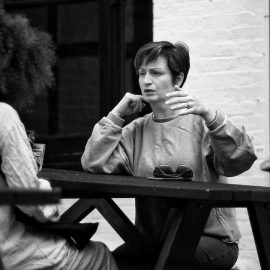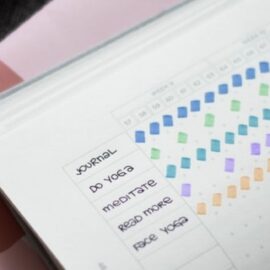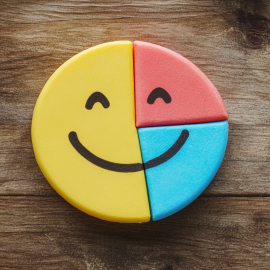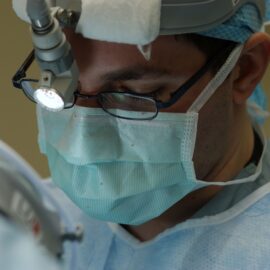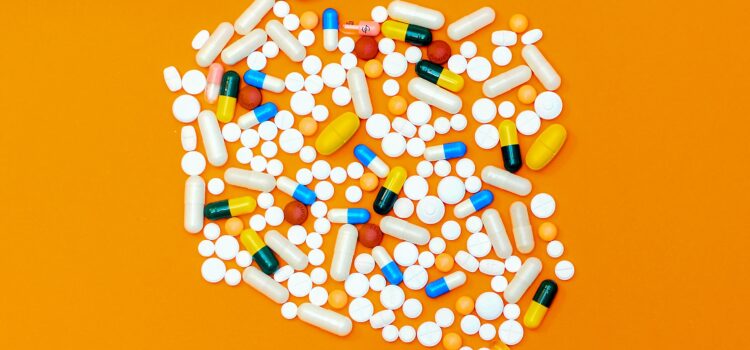

This article gives you a glimpse of what you can learn with Shortform. Shortform has the world’s best guides to 1000+ nonfiction books, plus other resources to help you accelerate your learning.
Want to learn faster and get smarter? Sign up for a free trial here .
What is the cycle of addiction? What are the stages of this cycle?
Addiction is more complex than taking one sip of alcohol and getting hooked. There’s a cycle people follow when they become dependent on a harmful substance, and it can make recovery extremely difficult. We’ve narrowed down the cycle of addiction into four stages: initial misuse, abuse, addiction, and initial recovery and relapse.
Keep reading for a more in-depth look at each stage of the addiction cycle, and how to break the cycle.
1. Initial Misuse
Addiction usually occurs when drugs or alcohol change the way your brain feels desire or pleasure. The Willpower Instinct by Kelly McGonigal explains how the brain interprets pleasure in the first place.
A neurotransmitter called dopamine creates our desires. When the brain senses the opportunity for a reward—like when it sees a patch of perfectly ripe berries—it releases dopamine, which causes a form of arousal. It tells the rest of the brain and the body to get ready for a reward that is coming soon. Dopamine makes us feel alert and excited. It directs us to take action.
Today, our brains release dopamine in response to all kinds of stimulating sights, sounds, smells, and tastes—like when we smell food cooking, see a sign in a shop window proclaiming “50 percent off,” gaze at beautiful photos in a fashion magazine, or chat with a flirtatious co-worker.
Taking part in most of these dopamine-fueled activities is completely harmless, and they can make our lives fun and interesting. There’s nothing wrong with occasionally indulging in a freshly baked apple pie, buying something frivolous at the mall, or flipping through beautiful magazines. But giving in to harmful substances such as alcohol or drugs can hurt the brain because dopamine keeps you wanting more of something you don’t need.
Too often dopamine can lead to addiction since it makes the brain crave a reward, but it never satisfies that craving. Dopamine tells us to keep wanting more, making us susceptible to temptations of all kinds. If we let dopamine rule our decision-making, we fail at self-control.
Why Denial of Drugs and Alcohol Backfires
Willpower works great for controlling our outward behaviors, but it can’t control our inner thoughts and desires. If you try to suppress your thoughts or cravings, you’ll be faced with “ironic rebound,” a syndrome in which you’ll become obsessed with the thing you’re trying not to think about.
It’s much more effective to graciously acknowledge a thought or a craving without giving in to it. Let your desires wander freely through your mind while realizing you don’t have to act on them. If the brain is allowed to express a thought or feeling that it was previously trying to suppress, it stops obsessing over it.
2. Abuse
Now that we’ve explored how your cravings and desires begin the dangerous cycle of addiction, let’s take a closer look at the role your brain’s natural chemistry plays in abusing substances. In Dopamine Nation, Anna Lembke writes that the balance of chemicals in your brain can either present enormous obstacles to overcoming overindulgence—or be part of the solution. Understanding your brain’s natural tendencies will help you change your behavior by working with your brain instead of against it.
People engage in high-dopamine activities because they lead to pleasure—and in turn, this pleasure keeps you locked in a cyclical loop of overindulgence.
Neuroscientists have discovered that pain and pleasure are processed in the same parts of the brain. When you’re feeling pain, you won’t feel pleasure, and vice versa. Lembke encourages you to imagine this system as a seesaw that tilts in either the direction of pleasure or pain.
When you engage in your high-dopamine activities, you “press down” on the pleasure side of the seesaw. This not only causes pleasure, but it also “lifts up” the pain side, alleviating your pain. Unfortunately, using pleasure to alleviate pain comes with a catch. Lembke explains that the brain has a natural tendency to balance out the seesaw, seeking what neuroscientists call “homeostasis.” If you press constantly on the pleasure side by overindulging in pleasurable things, the brain will naturally heap more “weight” on the pain side of the seesaw to keep your system in balance.
How the Pain/Pleasure Balance Makes It Hard to Stop Indulging
The excess “pain weight” that counterbalances pleasure can lock you into the “abuse” stage of the cycle of addiction because of two factors that work together:
- You build up a tolerance to pleasure. Each repeated experience of pleasure will have less of an impact because it must push against more weight on the pain side. This is why your fifth trip to the casino won’t feel as good as your first.
- You can set your default balance to pain. As you build up “pain weight” over time, it will keep weighing down the pain side of your seesaw, even when you aren’t doing anything pleasurable. Therefore your default state—when you’re not doing anything painful or pleasurable—will be feeling bad instead of feeling neutral.
These two factors have a cyclical effect: You feel pain when you stop consuming because of the extra weight placed on the pain side. This pain creates an incentive to consume again and go back to feeling okay. However, each act of consumption will have less effect than the one before, enticing you to indulge more than before. This, in turn, keeps adding weight to the pain side, digging you deeper and deeper into a negative feedback loop.
3. Addiction
After the abuse phase comes addiction itself. This is the stage where drugs and alcohol are now the main concern of the person’s life. Nothing else matters, and almost everything in their life is negatively affected by their addiction. At this point, quitting seems impossible because the addiction created a routine. Additionally, the addiction itself is now considered a brain disease because the pleasure circuits in the brain are overwhelmed, according to Yale Medicine.
Your brain creates automatic patterns based on the routines you engage in most often. While this process does offer many benefits such as not having to relearn everything you need to do daily, there is a significant drawback: Your brain permanently stores these patterns even if your habits are bad for you. According to The Power of Habit by Charles Duhigg, this permanent storage explains why bad habits are notoriously difficult to break. Without deliberate intervention, you continue to automatically engage in these habits.
This explains why many people continually try and fail to change “bad” habits they’d prefer to avoid such as smoking or drinking too much, binge-watching TV, or shouting at their kids every morning. They decided often enough to take a specific action, their brains recorded the pattern, and now they automatically carry out this pattern regularly regardless of their current preferences.
4. Initial Recovery and Relapse
At some point, the person suffering from addiction decides enough is enough. They put down the source of their addiction and swear to make a full recovery. However, sometimes it’s not that simple. People in recovery may relapse back into the cycle of addiction.
It’s human nature to be filled with desire, and if we have long-term goals we want to achieve, we need to spend a lot of time and energy reining in that desire. But as The Willpower Instinct claims, willpower tends to sag when our lives aren’t going perfectly. After a terrible day at the office and an argument with your boss, accessing your willpower to not indulge in drugs or alcohol can seem impossible. When we’re stressed, we are far more vulnerable to temptation.
Stress Makes Us Give In
Nothing weakens our willpower more than stress. It makes us give in to short-term impulses without any thought for the future. By reducing our daily stress, we can put ourselves in the best position to stop giving in and start having more control over our actions.
The best ways to relieve stress are exercising or playing a sport, praying, reading, listening to music, getting a massage, meditating or doing yoga, spending time outdoors, or spending time with friends or family. These methods actually boost the “happy chemicals” in your brain and diminish the stress response.
The worst ways to relieve stress are the strategies that promise a reward but don’t actually deliver it—smoking, doing drugs, drinking, gambling, eating, shopping, playing video games, binge-watching movies or TV, and surfing the Internet.
Feeling Guilty Makes Us Give In
We often create our own stress as we sabotage our good intentions with ill-chosen behaviors. For example, we vow that we’ll stop stretching our credit limits in online shopping sprees, but then we get an irresistible email from a favorite store offering 40 percent off if we shop before midnight. So we give in and buy that gadget we’ve been wanting. We feel great about our purchase for two seconds, but then we feel terrible because we’ve committed yet another willpower failure. To soothe our bad feelings, we check out a bunch of other shopping sites to see what’s on sale, and we buy more stuff we don’t need.
This cycle is known as the “what-the-hell” effect. It’s a way of telling yourself: “I already blew my diet, so I might as well eat this entire chocolate cake.” To break the cycle, you must stop believing that one small setback means you’re a dismal failure. When you criticize yourself this way, you wind up giving yourself an excuse to indulge more. Your brain feels the sting of your self-hate, and it wants to find immediate comfort, which drives you straight toward whatever temptation soothes you—food, alcohol, cigarettes, shopping, and so on. It’s a downward spiral that’s hard to stop.
How Instant Gratification Derails Us
Humans have amazingly complex brains, but all too often, we use them for rationalizing, not for making good decisions. Our brains did not evolve to respond to future rewards; they evolved to respond to what’s good right now. As a result, we’re experts at inventing mental tricks to convince ourselves that right now matters a lot more than tomorrow or next month.
This is what economists call “delay discounting”—we’re hooked on instant gratification and not willing to wait for future gratification. The longer we have to wait for something good, the less we want it.
When you’re trying to stay focused on your recovery, you need to stop discounting the future—or at least lower the rate at which you discount it. You have to wrap your mind around the idea that the future is just as important as the present—maybe even more so. Here’s a two-step plan that can help:
1) Imagine that a long-term goal that you’ve been working toward is already yours. Picture your future self enjoying the benefits of having achieved your willpower goal.
2) Ask yourself if you’re willing to give up that image of “happy-future-you” for the fleeting impulse that’s tempting you right now.
Accepting Your Reality
Another way to heal from dependency on the source of your addiction is to reach a state of acceptance. According to Codependent No More by Melody Beattie, acceptance means understanding and working with reality. Accepting reality is the only way to change your situation, and the only way to reach acceptance is to grieve. We can compare the act of accepting addiction to the five stages of grief.
There are five stages to grief: denial, anger, bargaining, depression, and acceptance. You must pass through all the stages before you can move past a loss or painful experience, Beattie says.
The first three stages are defense measures, but they become maladaptive over time: Denial stops painful information from overwhelming you until you’re safe enough to process it, Beattie maintains.
According to Beattie, once the painful information has been acknowledged, anger protects you from being sad.
Bargaining recognizes reality, but it tries to stop it from affecting you by striking deals, Beattie explains.
Depression occurs when the painful information fully sinks in, Beattie says. Most people try to avoid this stage because it’s so painful, but you must let it progress naturally.
Acceptance is the final stage of grief and the state of mind you should be living in, according to Beattie. It is the first step toward change: In a state of acceptance, you have made peace with what is true right now, so you can work to change what will be true in the future. If a person who has relapsed never accepts their condition, then they’ll have an even harder time overcoming it.
How to Break the Cycle of Addiction
Alcoholics Anonymous: The Big Book gives hope that the cycle of addiction can be broken. This book specifically refers to alcoholics in recovery, but it can be applied to any type of addiction.
To recover, an alcoholic must be sober for the rest of his life. A single drink can kick off a vicious cycle of drinking. It’s tempting for an alcoholic who has been sober for some time to believe that he can drink in moderation. This is a delusion. The book cites an alcoholic who had stayed sober for 25 years, and that he might give alcohol another try. Within two months, he was in a hospital, puzzled and humiliated. Within 4 years, he was dead.
The only way to escape the clutches of alcohol is to never drink again.
The Twelve Steps
Alcoholics Anonymous originated the famous Twelve-Step program, which is now broadly used in addiction recovery outside of alcohol. As stated above, these steps originally referred to alcoholism, but we’ve edited them so any person struggling with addiction can follow these steps toward recovery.
- We admitted we were powerless over addiction–that our lives had become unmanageable.
- We came to believe that a Power greater than ourselves could restore us to sanity.
- We made a decision to turn our will and our lives over to the care of God as we understood Him.
- We made a searching and fearless moral inventory of ourselves.
- We admitted to God, to ourselves, and to another human being the exact nature of our wrongs.
- We were entirely ready to have God remove all these defects of character.
- We humbly asked Him to remove our shortcomings.
- We made a list of all persons we had harmed, and became willing to make amends to them all.
- We made direct amends to such people wherever possible, except when to do so would injure them or others.
- We continued to take personal inventory and when we were wrong promptly admitted it.
- We sought through prayer and meditation to improve our conscious contact with God as we understood Him, praying only for knowledge of His will for us and the power to carry that out.
- Having had a spiritual awakening as the result of these steps, we tried to carry this message to people with substance use disorder, and to practice these principles in all our affairs.
Final Words
Addiction is a hard disease to conquer, but perseverance and resilience are the keys to overcoming it. By understanding what the cycle of addiction is and what stage you might be in, you can take the next step to recovery.
Do you have any thoughts about the cycle of addiction? Let us know in the comments below!

Want to fast-track your learning? With Shortform, you’ll gain insights you won't find anywhere else .
Here's what you’ll get when you sign up for Shortform :
- Complicated ideas explained in simple and concise ways
- Smart analysis that connects what you’re reading to other key concepts
- Writing with zero fluff because we know how important your time is

